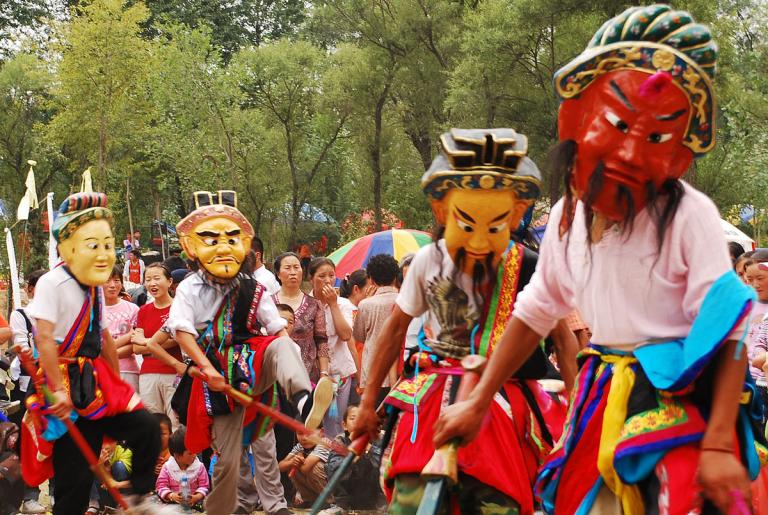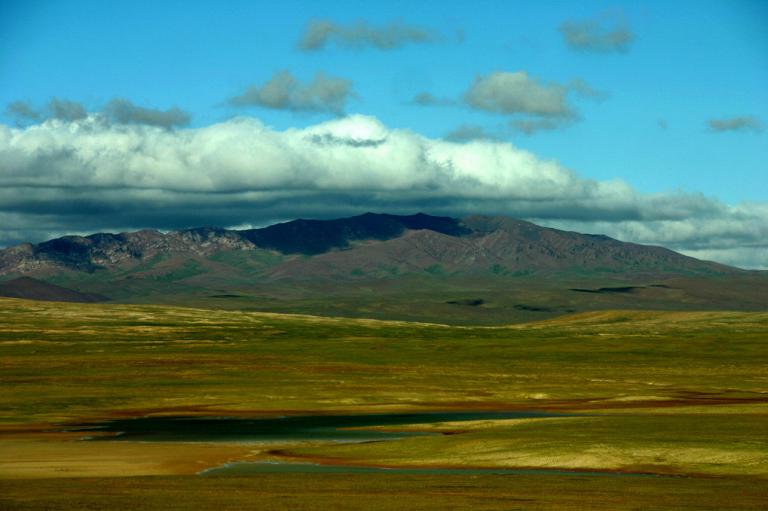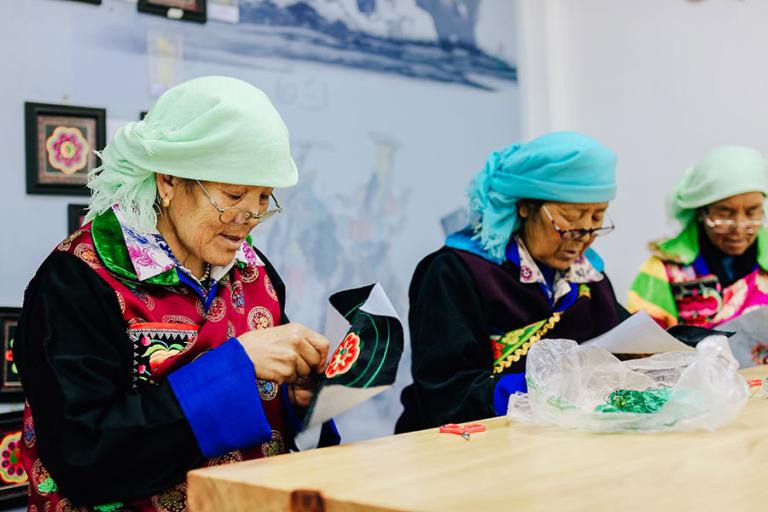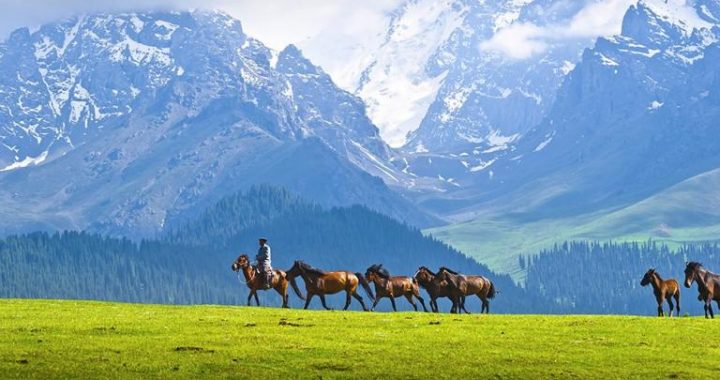Tu people in Qinghai Province
3 min readMost of the Tu people, about 240,000, live in the Huzhu Tu Autonomous County, Minhe and Datong County, east of Qinghai Province, while others live in Tongren, Ledu and Menyuan.

Their homelands are northeast of Qinghai-Tibet Plateau,a place of dense forests, large pastures and many rivers with a mild climate, abundant crops and fruit. The beautiful environments have greatly influenced them, giving rise to their brilliant cultural and artistic bent.
In the areas where many Tu people live, artists, either with monasteries or not, are devotedto painting, clay sculpture or wood engraving. They make Buddhist images and frescoes or decorations on lintels, beams or column ends. These artists are called Regong lasuo, and their art is called Regong art. Many monasteries in Qinghai-Tibet Plateau have their works. Most of their paintings are done in a meticulous-brushstroke style, often in sumptuous colors, characteristic of the Tibetan Buddhist School. On the ends of columns or beams, engraved patterns of a good harvest or strong, domestic animals are often seen. In construction decoration, the artists are probably the most famous. The clay Buddhist sculptures in these areas exhibit obvious attempts by Tu artists to incorporate Tibetan and Han religious features.

The Tu people’s clothes are very typical of their culture and can be distinguished in one glance.People call them”a rainbow nationality.”White underwear with embroidered high collars and angled fronts inside,and coats of black-trimmed sleeves,black or dark vests,blue loose pants plus embroidered waist ribbons are typical attire for men.Some young men like to have an embroidered pattern on the front of their coats.Some Tu men wear felt hats tilted up both front and back.The clothes for women vary from place to place,but they are all in bright colors,some in five colors,others in seven.
Their ribbon belts are wide and long,with embroidered patterns at both ends.They wear black or purple vests over their blouses,and long skirts or trousers.Young women like red and their skirts are multicolored,while the middle-aged prefer brown,with openings on both front and back.Their slacks are in two colors above or under the knee.The color under the knee represents her marital status.The single woman wears red while the married has blue.
Their embroidery works can be seen on collars and sleeves.Young men like to have an embroidered square pattern on the front of their coats,a pattern of tai ji or plum-flower images.Another pattern called”fortune continues to no end”is often seen on belts or collars.Almost everything-a pillow cover,a diamond-shaped cloth worn by babies,tobacco pouch,purse-has embroidery.If a girl is skilled at this,she is looked on favorably by everyone,and is believed a potentially good wife.
The Tu people’s unique folk songs fall in two types:”family songs”and “wild songs.”The “family songs”include eulogies, mischievous questions and answers, wedding songs and ballads, have fixed tunes, often in two stanzas. Eulogies are melodious and soft, while the mischievous questions and answers are short and succinct, with a pause at the end of each line. The”wild songs”are also called
“flowery tunes(hua’ er)”of a dozen or more kinds. Their “flowery tunes”have similarities with those in Gansu, Qinghai and Ningxia, all being very resonant, high-pitched, fast and unrestrained. The difference is that the Tu people’s songs have a bigger variation in melody and a wider range.
Their”flowery tunes”have two, two and a half, or three completed stanzas, two of them having substantial lyrics while the rest having supporting echoes. Each tune is repeated twice, with a drawnout endnote. If you ever have a chance to visit their area, don’t miss the opportunity to hear this unique form.

